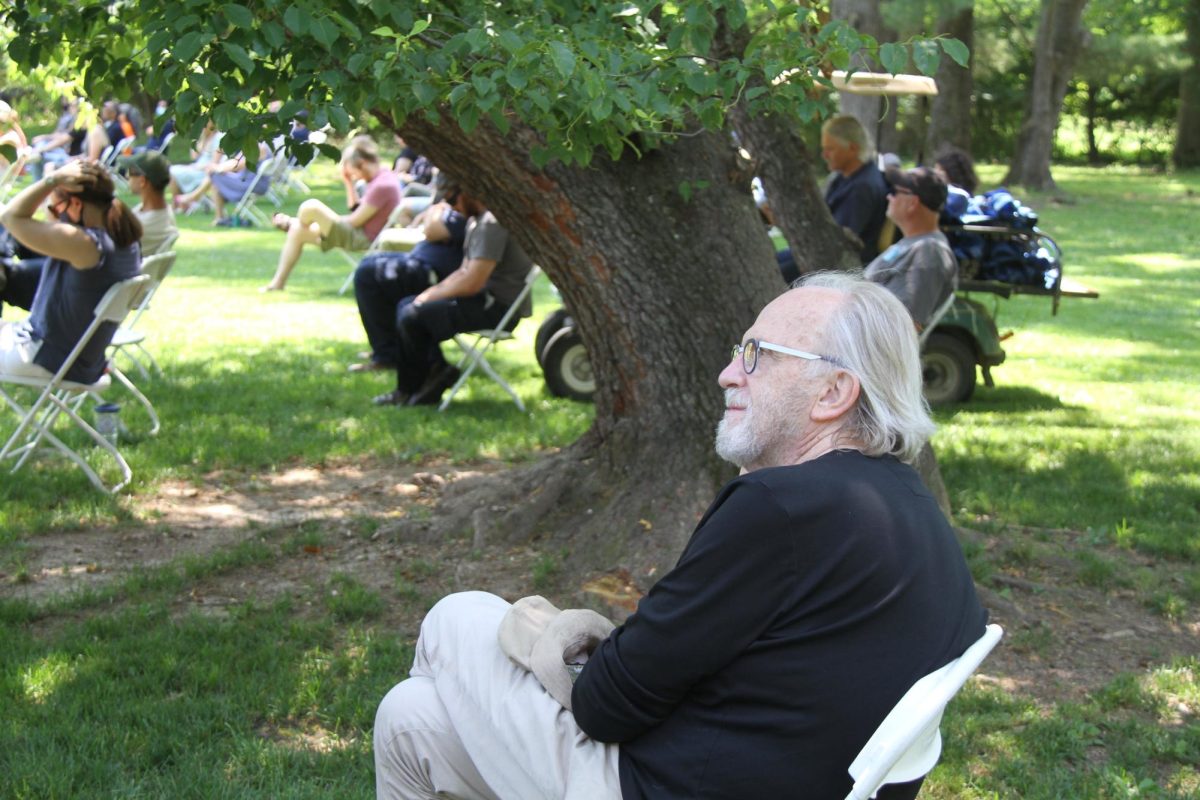Trump’s First 100 Days
May 18, 2017
Andrew Jackson, U.S. president from 1829 to 1837, achieved incredible political success and embodied the ideal of the self-made American man. He represented the layman and advanced a message of solidarity against entrenched establishment interests. Today, his figure has been overshadowed by modern scrutiny of his behavior and mistreatment of Native Americans. Ronald Reagan campaigned on the basis of shrinking government, cutting taxes, reducing regulation, and bolstering America’s defenses. During the 1980 election year, only 28% of the electorate identified itself as “conservative,” only 13% as “strong Republicans,” and only 10% of Reagan voters identified his conservative ideology as a key motivator. In a Floridian rally, Trump referenced Jefferson, Jackson, and Lincoln as presidents who “fought with the media, and called them out oftentimes on their lies.”
While President Donald J. Trump appeared unique in that he galvanized voters and gained the support of so many American citizens, ultimately winning the presidency of the most powerful nation in the world, he is the continuation of a legacy shaped for and by Americans, based on a strong worldly, economic, and political presence. Americans today are aghast at our socio-political scene, expressing widespread distrust of the government, criticizing its efficiency, and holding elected officials in such low regard that “55% of the public says ordinary Americans would do a better job of solving national problems.”
Trump’s business reputation and connection to the present-day political atmosphere largely determined his victory. Our president and his campaign highlighted the negativity of political systems that have begun to rile many Americans, and served as rallying points for the transition to an improved government.
President Trump’s strong personality complemented his stature in this election. Trump presented the apt message of “Making American Great Again” and ran as a populist candidate during a period of economic and social frustration in many parts of our country. He relates personally with his voters, even calling a passionate Floridian whom he had never met before onto the stage with him at a post-election rally. Moreover, President Trump is concerned with the same values–including emphasis on family, strong morals, religion, national security, foreign policy, immigration reform, job creation, and tax reform–as a major and previously neglected portion of our country. His unique skills as a negotiator and businessman, and his reputation as a long-term benefactor of his contacts, including women and employees, provided positive rallying points for voters. From the very beginning of his campaign, Trump demonstrated independence from typical processes, as exemplified by his primarily self-sufficient campaign.
Trump successfully highlighted each of his connections to Americans better than Hillary Clinton did. He gained a 67% majority among voters without college degrees, which was the largest in exit polls since 1980, 53% among males, and 53% among voters over 65 years old. Senator Clinton’s margins in typical Democratic voting pools, on the other hand, decreased from those of Obama in 2012 on nearly every front.
However, many qualities that might have propelled Trump to office are considered weaknesses by his critics. Donald Trump was no politician. Clinton is, by contrast, the classic example of a career-politician who has been waiting to inherit the presidency since she failed to do so in 2008. In fact, her political experience was cited by 79% of her nearly 66 million supporters as one of the major factors that swayed them to cast their ballots in her favor on November 8th. Trump did make history on election day, as he became the first presidential candidate to win without any governmental or military experience.
President Trump’s campaign capitalized on his history as a businessman as an economic assurance but, upon closer examination, business prowess in 20th century U.S. presidents has yielded little to no success in economic growth. In fact, it often led to the opposite. Four of the six businessmen turned presidents (beginning with Hoover) are widely regarded as the worst presidents in the history of the American economy, while the only president worth noting with a relatively successful business background is Harry Truman. The irony in this, however, lies in the fact that Truman’s background as a businessman is widely regarded as a failure because his one and only business endeavor filed for bankruptcy after two years.
Many of Trump’s supporters this election season also cited his willingness to “speak his mind” where no other person would. “We cannot afford to be so politically correct anymore,” our president said in his address at the 2016 Republican National Convention. However, his temperament ranked as the top candidate concern among his supporters. Among those who opted for Clinton over Trump, 32% cited their top reason for choosing the Democratic ticket was “She is not Trump.”
The loaded language that Trump utilized this election season is undeniable. From his comments that Senator John McCain is “not a war hero,” to his frequent remarks on women’s appearances (e.g. Rosie O’Donnell or Carly Fiorina), to his mockery of journalist Serge Kovaleski’s physical disability, and finally, his infamous assertion that Mexico is sending its crime, drugs, and rapists to the U.S., President Trump has made his candor known. Yet it is the sentiment behind this seemingly crude language that mobilized many Americans to support Trump. While not politically correct, these remarks speak to Americans’ fears of unemployment and loss of geopolitical strength. As the Pew Research Center study of top issues for voters in 2016 demonstrates, the economy, terrorism, and foreign policy were top voter priorities for the the vast majority of Americans (84%, 80%, and 75% respectively) in the election.
Hate crimes surrounding this election have since become a major issue. Minorities have and, if history is any indication, will continue to bear the brunt of our president’s “speaking his mind,” and this marginalization of certain demographics—whether they be women, Muslims, people with disabilities, or people of color—will remain an issue for the 66 million who did not vote in Trump’s favor. It is not a coincidence that immediately following his election, the frequency of hate crimes in the U.S. spiked, and while numbers have levelled out since then, the Southern Poverty Law Center reports that they remain higher in volume than pre-election. To the post-election perpetrators, President Trump said, “Stop it” in his November 13th televised interview, but “stop it” will likely not be enough to bring the nation together.
Finally, while President Trump claims to speak for the people, many express concern over his inattention to issues some deem vital to the retention of American civil liberties. These issues range from the repeal of Obamacare to women’s reproductive rights, race-relations and the status of American police brutality, and LGBT+ rights. These issues are not ones that will disappear, especially in light of the #NotMyPresident movement and the January 21st Women’s March on Washington (the largest demonstration in the history of the United States since those surrounding the Vietnam War). Regardless of where citizens stand on these issues, if Donald Trump is to be the “president for all Americans,” he must work to resolve the polarized state of American politics.
As mentioned earlier, the 2016 election highlighted the schisms between American socioeconomic groups, ages, genders, races, and levels of education. The Democratic Party dominated voting blocs comprised of millennials and those a generation older. Between the ages of 18-29, 55% and 37% percent favored Clinton and Trump respectively, while between the ages of 30-44, they were favored by 50% and 42%.
Alternatively, the Republican party led by similar margins in those 45 and older, rallying 53% of the support from those between the ages of 45 and 65 (Clinton managing 44%), and another 53% from those 65+ (as compared to Clinton’s 45%). As for gender, while not an overwhelming margin, it is worth noting that Trump fared slightly better with men than women, 53% of men opting to vote Republican while 41% opted Democratic. In contrast, 54% of women voted for Clinton while 42% cast their votes for Trump.
Race also became one of the most telling factors in the voting blocs of 2016, with the majority of minority voters casting their ballots for Hillary Clinton. 88% of Blacks, 65% of Latinos, 65% of Asians, and 56% of those identifying as “other race” voted Democrat, while 58% of whites voted for the Republican ticket.
White non-Hispanic voters voted President Trump over Clinton by 21 percentage points, yet Senator Clinton did not run as strongly among Blacks and Hispanics as Obama did in 2012. While 49% of white college graduates and and 67% of whites without degrees opted to vote red, 71% of non-white college grads and 75% of nonwhites without degrees voted blue, emphasizing that while education and income certainly dominated election politics, race played just as much, if not an even bigger role, in shaping today’s elected government.
While President Trump’s tenure in politics thus far has been riddled with contention, the election of Donald J. Trump has assuredly been, and will continue to be, a turning point in contemporary American politics. “I will Make Our Government Honest Again,” Trump tweeted on the 17th of October. In pledging to “drain the swamp in Washington, D.C.,” the president was clearly alluding to the centuries-old debate around elitism and populism in national politics. The fact of the matter is, Americans are tired of career politicians and a Washington that does not represent the people. Whether or not Trump is the person who will fix this remains in doubt, but it is shortsighted to ignore the role his of-the-people rhetoric played in defeating Hillary Clinton in November.
Immigration
While many Americans are aware that President Trump’s executive order on immigration was blocked in court, the exact details of this policy are largely misunderstood. The first of two immigration orders, “Protecting the Nation from Foreign Terrorist Entry into the United States,” barred refugees from anywhere in the world (for 120 days), Syrian refugees (indefinitely), and non-immigrant Iraqi, Iranian, Libyan, Somalian, Sudanese, Syrian and Yemeni individuals (for 90 days) from entering the U.S. It did not exclude green card holders. While these prohibitions are more stringent than the previous administration’s, the countries chosen for this executive order are exactly the same as the ones that President Obama and his Congress had already targeted for extra scrutiny, and had prohibited for visa waivers.
On February 7th, the Ninth Circuit heard a case against this first order, and its three judges unanimously voted against it. More recently, “Protecting the Nation From Foreign Terrorist Entry Into the United States,” a revised order, revoked the first travel ban, and reinstated a policy excluding Iraq, excising the indefinite ban on Syrian refugees, removing priority given to religious minorities, and allowing those already in possession of a valid visa, no matter their origin, to enter the United States. Hawaii challenged this second order on Wednesday, March 8th, and Judge Derrick Watson temporarily restrained it the following week for its “religious animus.” This order has been stalled.
Health Care
President Trump’s “American Health Care Act” fell short when even last-minute negotiations and personal lobbying from President Donald Trump in late March could not garner the support it needed to pass.. Ultimately, Republican House Speaker Paul Ryan made the decision to pull the bill from the floor on the 24th, leaving the Republican Party’s goal of repealing the Affordable Care Act unfulfilled.
Intra-party divisions between moderates and staunch conservatives proved to play a major role in failure of the AHCA. Due to the divided nature of the House, Republican votes were vital to its success. 33 Republicans claimed they would vote “no” on the bill, and of those 33, 15 were hard-line conservative members of the House Freedom Caucus–the group widely criticized for its contribution to the fall of the AHCA. The remaining 28 are a mixture mixture of moderates, members of the Tuesday group, and various Republicans voting “no” for an array of reasons.
Tax Reform
Efforts by President Trump to reform taxes will most likely be harmed by the recent health care debacle, as the savings from the American Health Care act were vital to the party crafting a revenue-neutral bill. However, it also seems that President Trump might redouble his efforts on this front to overshadow that failure. His aims include tax relief for middle class Americans, simplifying the tax code, and growing the American economy. He hopes to do so by excluding single people earning less than $25,000 and married people who jointly earn less than $50,000 from income tax rolls; removing three of the current seven tax brackets; eliminating the marriage penalty, death tax, and the Alternative Minimum Tax (AMT); and ensuring that no company pays more than 15% of their business income in taxes.
The question has now shifted from “Will Donald J. Trump be elected?” to “What will Donald J. Trump do as president?” Currently, his popularity ratings are among the lowest a new president has seen in at least a generation, but, among Republicans, just 10% view him negatively, while 85% of Democrats hold an unfavorable view. This discrepancy clearly highlights the contradictory perspective of political success between America’s two largest parties. A Democrat and one of the pollsters of the above charts reported, “The end of an election and especially the start of a new administration is typically a time for the nation to come together, at least temporarily…[President] Trump inherits a nation that remains deeply divided within itself and with questions about whether the new president has the skills and temperament to lead us.”
We encourage you, our readers, to determine your own views based on what has become challenging research. To get started, try to visit Fox News’ “President Trump’s First 100 Days in Office,” for a complete outline of his political actions since being sworn in as president.





